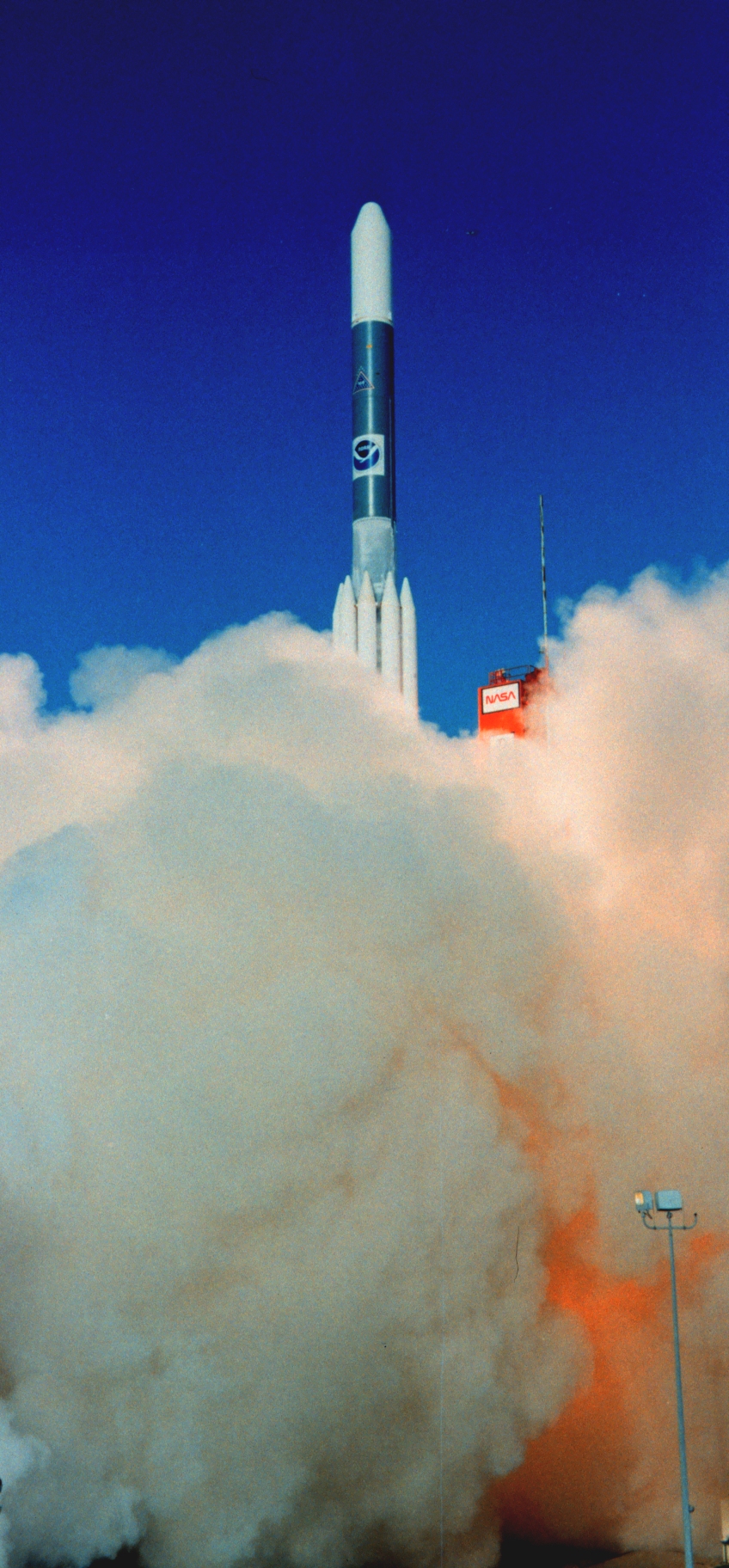GOES 6 on:
[Wikipedia]
[Google]
[Amazon]
GOES-6, known as GOES-F before becoming operational, was a geostationary

weather satellite
A weather satellite or meteorological satellite is a type of Earth observation satellite that is primarily used to monitor the weather and climate of the Earth. Satellites can be polar orbiting (covering the entire Earth asynchronously), or ge ...
which was operated by the United States
The United States of America (U.S.A. or USA), commonly known as the United States (U.S. or US) or America, is a country primarily located in North America. It consists of 50 states, a federal district, five major unincorporated territorie ...
National Oceanic and Atmospheric Administration
The National Oceanic and Atmospheric Administration (abbreviated as NOAA ) is an United States scientific and regulatory agency within the United States Department of Commerce that forecasts weather, monitors oceanic and atmospheric conditio ...
as part of the Geostationary Operational Environmental Satellite system. Launched in 1983, it was used for weather forecasting in the United States.
GOES-6 was built by Hughes Space and Communications
The Hughes Aircraft Company was a major American aerospace and defense contractor founded on February 14, 1934 by Howard Hughes in Glendale, California, as a division of Hughes Tool Company. The company was known for producing, among other prod ...
, and was based on the HS-371 satellite bus
A satellite bus (or spacecraft bus) is the main body and structural component of a satellite or spacecraft, in which the payload and all scientific instruments are held.
Bus-derived satellites are opposed to specially produced satellites. Bus-d ...
. At launch it had a mass of , with an expected operational lifespan of around seven years.
Launch
GOES-F was launched using a Delta 3914 carrier rocket flying from Launch Complex 17A at the Cape Canaveral Air Force Station. The launch occurred at 22:26 GMT on 28 April 1983.Orbit
The launch successfully placed GOES-F into a geosynchronous transfer orbit, from which it raised itself to geostationary orbit by means of an onboardStar 27 The Star is a family of US solid-propellant rocket motors originally developed by Thiokol and used by many space propulsion and launch vehicle stages. They are used almost exclusively as an upper stage, often as an apogee kick motor.
Three Star 3 ...
apogee motor, with insertion occurring on 9 May 1983.
Following insertion into geosynchronous orbit, GOES-6 was positioned at 135° West. In 1984 it was moved, initially to 97° West, and later to 108° West to cover for the failure of the Visible Infrared Spin-Scan Radiometer on GOES-5. After GOES-7 replaced GOES-5 in 1987, GOES-6 was returned to 135° West, where it remained for the rest of its operational life. Its imager had failed on 21 January 1989, leaving GOES-7 as the only operational GOES satellite for over five years, until the launch of GOES-8 in 1994. Following this failure, it remained operational as a relay satellite until it was retired to a graveyard orbit on 19 May 1992.

See also
*1983 in spaceflight
The following is an outline of 1983 in spaceflight.
Launches
, colspan="8",
January
, -
, colspan="8",
February
, -
, colspan="8",
March
, -
, colspan="8",
April
, -
, colspan="8",
May
, -
, colspan="8",
...
References
{{DEFAULTSORT:GOES-6 1983 in spaceflight Spacecraft launched in 1983 Geostationary Operational Environmental Satellites